M. FORD CREECH ANTIQUES & FINE ARTS
www.mfordcreech.com
"MOVIES"!
Or "moving
pictures"..... wherein
art and technology merge.
Such a union is commonplace and taken for granted in today's life.
We "marvel" (perhaps) only at the special effects - 2001 : A
Space Odyssey; Hobbit.
But let us take a look at movies' predecessor - the modern "marvel"
of 1823 :
"The Portable Panorama"
Until this time, single images had portrayed a scene, only from a
stationary viewpoint.
The newly introduced "Panorama" depicts a continuous story
from the moving traveler's multiple viewpoints :
that is - a sequence of images, unrolling on a single elongated
sheet.
The first - in short -
"Movie"!
May we introduce :
COSTA SCENA : A
Cruise Along the Southern Coast of Kent
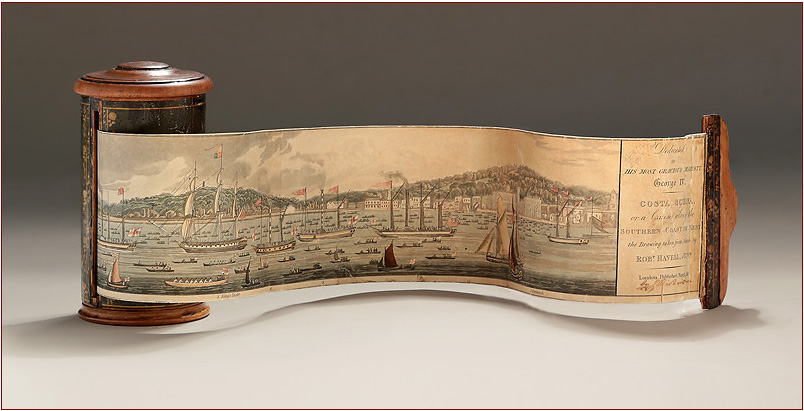
A Cased Strip Panorama,
An Aquatint
"Dedicated to His Most
Gracious Majesty George IV",
The Scenes Taken from
Nature By Robert Havell Jr.*, Published London, 1823
Consisting of seven conjoined sheets unrolling to depict (from
moving viewpoints)
the departure of George IV aboard the Royal George, on his 1822
state visit to Scotland,
from Greenwich down the Thames;
and an accompanying steamboat veering eastward through stormy waters
to Calais;
housed in a lacquered-paper covered cylindrical treen case depicting
Britannia,
her shield with a roundel portrait of George IV,
accompanied by Neptune holding a trident,
riding in a shell drawn by two horses with tails,
and being driven by a
putto;
the paper watermarked J WHATMAN, 1821;
the title panel illegibly inscribed
3 Inches High x 18.25 Feet Long
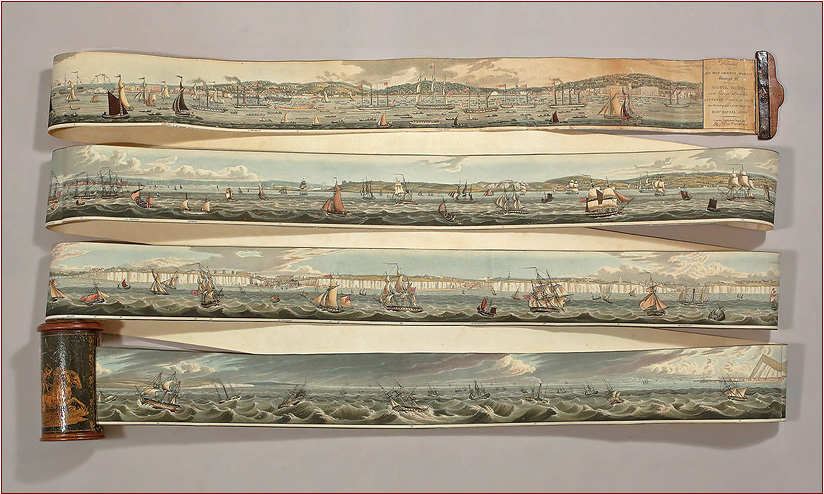

King's Yacht (ref 5) : "The Royal George", being towed
by the steamboat
"Comet"
as it departs from Greenwich, accompanied
by the regatta, on the journey to Scotland.
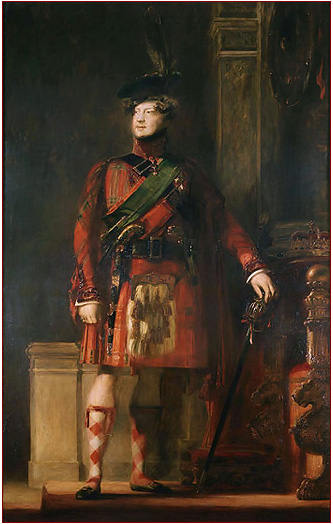
Portrait of George IV
wearing the Scottish kilt during the depicted trip to Edinburgh,
1822
(Sir David Wilkie, Dec. 1828, Royal Collection Trust) .
This was the first
official visit of a reigning English monarch to Scottish
soil for two centuries.
After the English defeat of the Jacobite movement at Culloden (April 1746),
the wearing of the kilts and clan plaids had been
banned in all of Scotland.
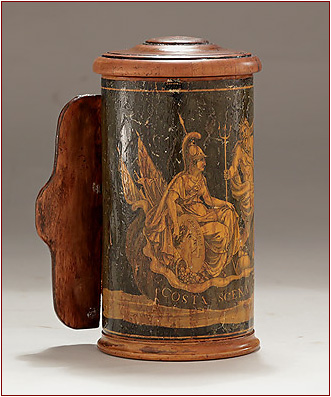
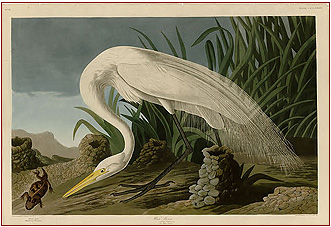
*Robert Havell, Jr. (1793 - 1878) was the principal engraver of Audubon's
'Birds of
America',
perhaps the most
significant natural history publication of all time.
Above is Havell's
familiar aquatint engraving of Audubon's "White Heron",
a precise and elegant
glimpse into the natural world of the American
wetland bird.
From "Birds of America",
John James Audubon, #386 "White Heron".
|